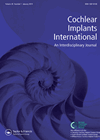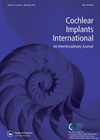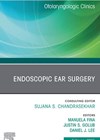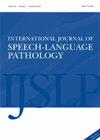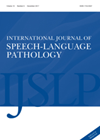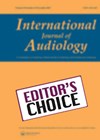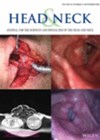
Journal Reviews
The impact of bilateral implantation on language outcomes
An American study retrospectively looked at the language outcomes of 204 children implanted either bilaterally, sequentially or unilaterally. All children received their first implant before the age of three years, and language measures were collected when the children were aged...
Contralateral OAEs in children
Several studies indicate that small changes in the medial olivocochlear (MOC) reflex may possibly be associated with certain pathologies. This could be measured by using contralateral acoustic stimulation (CAS) and observing suppression in otoacoustic emissions (OEAs). The main aim of...
Recording of electrode voltages (REVS) to determine extra-cochlear electrodes
Determining whether electrodes are sitting within the cochlea can be difficult as the checks run by the programming software cannot always determine this. In some cases, patients may be unable to give the audiologist detailed feedback which can complicate the...
Lateral skull base surgery using the endoscope
Endoscopic lateral skull base surgery could be performed via less invasive techniques due to wide panoramic visualisation of the operative field. With less invasive techniques, patients have been shown to require shorter recovery time and reduced postoperative pain. In this...
Students on camp
This article describes a three-day weekend camp for individuals with chronic aphasia and their care partners, designed to address personally relevant activities and conversations that help redevelop self-worth, confidence, and identity. The aim is to support carryover into individuals’ local...
Effect of stimulation levels on speech recognition and auditory threshold performance
When programming a Cochlear® device, two measurements are normally assessed. T levels relate to the quietest sound the CI user can hear i.e. thresholds, and C levels are comfortable levels which are tolerable for the CI user. If these levels...
What is voice?
Voice is an area of clinical practice in speech and language therapy where there remains much debate, not only around the aetiology and classifications of voice disorders, but around the treatment of them. In general, it is accepted that ‘voice...
Smartphone hearing test
Our Editors’ Choice for this edition reviews an article looking at the use of a smartphone app for hearing screening. We have all had to integrate telehealth into our practice to some extent recently and this paper examines a teleaudiology...
Hidden disabilities and cochlear implantation under 12 months of age
There has been a global shift to providing children with severe-profound deafness cochlear implants (CIs) before they are 12 months old. Early intervention is critical and one of the overriding factors in successful outcomes for children with CIs. Early implantation...
CATE in people with dementia
Behavioural hearing tests may be difficult to perform for people with dementia. The aim of this study was to investigate if the cortical automatic threshold estimation (CATE) may be used as an alternative to the pure tone audiometry test. Six...
Predicting the need for salvage laryngectomy
The treatment of laryngeal cancer has seen a shift towards organ preservation strategies with non-surgical treatment offering equivalent survival outcomes. Nonetheless, salvage total laryngectomy (SLT) remains an important curative management option in cases of treatment failure or recurrence. The authors...
How long is too long? Waiting times for speech and language therapy
Waiting lists are a reality of clinical practice, and many health and social care professionals become used to having to cope with this. The authors of this paper addressed this issue by examining written submissions to the 2014 Senate Inquiry...

